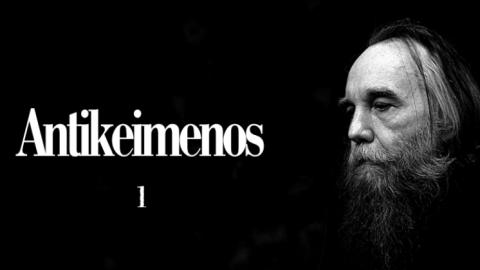ANTIKEIMENOS [1]
Primary tabs

Traditionalism and Semiotics
The purpose of this article is to examine the figure of "the Antichrist" and the semantic field of "the end of times" without reference to any one particular religious tradition.
But the figure of the "Antichrist" (Ο Αντίχριστος) has such a tie - to Christianity. Consequently, we can say that we are considering not only and not so much directly the Christian figure of the Antichrist, but also his analogues. This leads us to the theme of traditionalism.
What is traditionalism? It is not one tradition. It is that structural matrix, that paradigm that is common to different traditions.
If we compare them with Modern society, with the New Age, and with the secular paradigm of modern science, we find that all particular traditions and religions have something in common.
The desire to describe, identify, highlight this commonality leads to traditionalism.
In such a context, traditionalism can be understood as the result of a sociological analysis of modernity (with negative conclusions) and with a parallel comparativism of specific traditions. But it claims (for example, in the person of Guenon[1]) something else - "primordialism," that is, that traditionalism is an expression of Primordial Tradition, which precedes, rather than follows, known traditions.
We will not discuss now the question of whether this claim is justified. For now, it suffices for us that the sociological procedure reconstructing traditionalism or the paradigm of traditional society in contrast to modern society is perfectly valid. This alone gives Guénon credibility. Whether his conviction that the sociological and philosophical concept of "Tradition" corresponds realistically and historically, as well as ontologically, to some underlying essence that can be perceived experientially (including metaphysical and spiritualized forms of experience) is justified, however, requires more careful consideration. That is, whether we can speak of true "primordiality" rather than simply a posteriori mental reconstruction akin to postmodernist generalizations is an open question.
The value of Guenon in the context of the Postmodern is obvious. But how do his ideas relate to the structures of the Premodern? And is there something in the Premodern that he singles out as its central part - that is, Primordial Tradition?
Our hesitation will keep us from falling into syncretism, New Age, occultism and neo-spiritualism. We are not passing a verdict, we are saying: let us accept the thesis of "Tradition" and even of "Primordial Tradition" as a concept that is certainly operative sociologically (common structure for specific traditions) and let us put (for now) out of brackets its historical and ontological validity.
Let us approach the problem from the perspective of semiotics. What is a particular tradition? A religious tradition, for example. It is language[2]. This language is structured, contains signs and syntax, creates (connotative - for structuralists) fields of meaning, constitutes or describes (constitutes) denotations. In any case, a particular tradition has three linguistic and logical strata:
a series of signs (symbols, dogmas, plots, myths, narratives), that is, the structure of the signifier;
- a series of meanings (signifiers) corresponding to the signs;
- and a series of meanings (governing the relations of the first and second rows - or the relation of the signs of the first row to each other, connotation).
For example, when a Muslim says, "Allah," he means differently than a Christian means when he says, "God. Without a detailed analysis of the three rows, we cannot understand anything about a particular tradition. In the same way, "Antichrist"-strictly has meaning (and significance) only as a figure of the Christian narrative, of Christian dogmas; It is related to Christ in a complex way (most often in reverse) and points us to a denotative (denoted) that is constituted exclusively by Christian religion and resides within its framework. It is possible to speak of the Antichrist as a connotation that derives its being from its conceptual place in the system of Christian language and its structure.
The same can be said of any figure of a particular religion. For example, the Khizra of the Muslims or the prophet Elijah of the Jews. Some things are remotely analogous in other religions, some are not.
In addition, there are Loanword and reinterpretations of the same figures in different contexts. This complicates the analysis.
[1] Guenon, R. The crisis of the modern world. Moscow: Arktovegiya Center, 1991.
[2] Dugin A. Philosophy of traditionalism. Moscow: Arktohegya-Centre, 2002.
